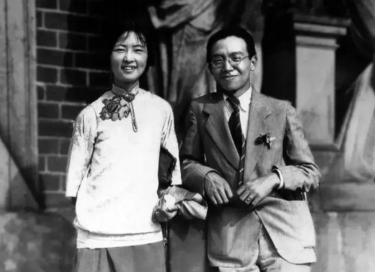
China has produced many outstanding architects whose work is admired worldwide. Four figures stand out for their lasting impact and global recognition.
I. M. Pei (1917–2019)
Ieoh Ming Pei, born in Guangzhou, became the most famous Chinese architect internationally. Inspired by Suzhou gardens in his youth, he studied architecture in the United States. Unhappy with traditional teaching, he explored modern designs. Pei worked for a New York developer before starting his own firm in 1955. His major works include the Mesa Laboratory in Colorado, the John F. Kennedy Library, the Louvre Pyramid in Paris, the Bank of China Tower in Hong Kong, and the Suzhou Museum. Pei received top honors like the Pritzker Prize (1983), often called architecture’s Nobel Prize, and the AIA Gold Medal (1979).
Lin Huiyin (1904–1955)
Lin Huiyin was modern China’s first female architect. After studying at the University of Pennsylvania and Yale University in the 1920s, she worked closely with her husband, Liang Sicheng. Together, they discovered ancient treasures like the Tang Dynasty Foguang Temple. After 1949, as Tsinghua University professors, they dedicated themselves to protecting China’s cultural heritage. Lin also contributed to designing China’s national emblem (徽章) and the Monument to the People’s Heroes, and authored poetry and essays.
Wang Shu (b. 1963)
Based in Hangzhou, Wang Shu is dean (院长) of the China Academy of Art’s School of Architecture. He co-founded the Amateur Architecture Studio with his wife, Lu Wenyu. In 2012, Wang made history by becoming the first Chinese citizen to win the Pritzker Prize, architecture’s highest global honor, recognizing his unique and culturally rich designs.
Liang Sicheng (1901–1972)
Liang Sicheng is considered a founder of modern Chinese architecture and a protector of traditional buildings. He promoted the idea of “old and new styles together”, greatly helping preserve China’s ancient architecture. With his wife Lin Huiyin, he co-designed Beijing’s Monument to the People’s Heroes, mixing classical stone carving with modern design to create a monument with special Chinese character.
These architects connected China’s deep traditions with new ideas, creating works celebrated across the world.
原创编写 版权所有 侵权必究! 每日更新 个性化阅读 英语飙升!
2.2. What does the underlined word “they” in Paragraph 3 refer to?
A Ancient treasures.
B Lin Huiyin and Liang Sicheng.
C Tsinghua University professors.
D Cultural heritage sites.
解析:选B。B 词意指代题。结合第三段划线单词上文“she worked closely with her husband, Liang Sicheng.”可知,这里的“they”指的是林徽因和梁思成两人,他们一起发现了唐代佛光寺等古代瑰宝。故选B。
3.3. What can we infer about Wang Shu?
A He teaches at Yale University.
B He designed the Louvre Pyramid.
C His wife may also be an architect.
D He won the AIA Gold Medal.
解析:选C。C 推理判断题。从第四段中的“He co-founded the Amateur Architecture Studio with his wife, Lu Wenyu.”可推断出,他的妻子陆文宇和他一起创办建筑工作室,由此推断,他的妻子可能也是一名建筑师。故选C。
4.4. What is the main idea of the text?
A The history of Chinese architecture.
B The works of famous architects.
C The teaching methods of architects.
D The contributions of four Chinese architects.
解析:选D。D 主旨大意题。文章主要介绍了贝聿铭、林徽因、王澍和梁思成四位中国建筑师,阐述了他们在建筑领域的贡献。故选D。
